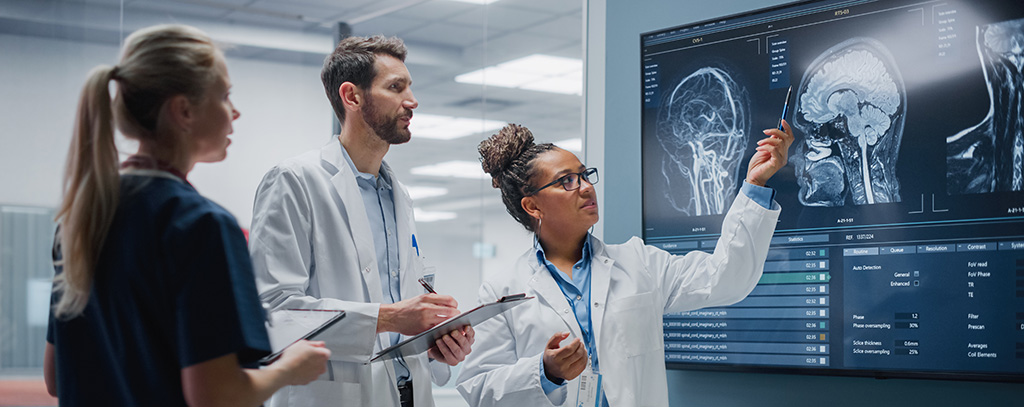


What Does a 12 Panel Drug Test Tests For: In-Depth
May 29, 2023


What is a 12 Panel Drug Test: A Company’s Guide
May 30, 2023This comprehensive screening tool has become an invaluable asset for organizations seeking to identify potential issues related to drug use. In this blog post, we'll delve into the understanding of the 15 panel urine drug test and explore its various applications in today's workplace.
We'll discuss the wide range of targeted substances, as well as notable products like Halux's 14 Panel Drug Test Cup Kit. Additionally, we will examine both benefits and limitations such as false positives due to cross-reactivity.
Furthermore, we'll outline how healthcare professionals play a crucial role in interpreting results and determining appropriate treatment plans after positive confirmation tests are conducted.
In conclusion, our conversation will focus on the need for subsequent testing and tackling fundamental causes of addiction to guarantee precise diagnoses and successful interventions for those influenced by drug misuse in your organization.
Advantages of the 15-Panel Urine Drug Test: A Comprehensive Approach to Workplace Safety
Alright, let's dive in.
The 15-panel urine drug test is a powerful tool for companies aiming to maintain a safe and productive work environment.
Why?
Well, it offers several advantages that make it an attractive option for initial screening purposes.
Noninvasive Testing Method
No needles or blood samples required.
This test uses urine samples, making it less invasive and more comfortable for employees compared to other testing methods like blood tests or hair follicle analysis.
Ease of Use in Various Settings
Whether you're conducting pre-employment screenings or random drug tests at the workplace, this test can be easily administered on-site without any hassle.
Wide Range of Targeted Drugs
- Marijuana (THC)
- Cocaine (COC)
- Opiates (OPI)
- Amphetamines (AMP)
To name just a few. The 15-panel urine drug test detects numerous prescription medications, over-the-counter drugs with potential abuse risks, as well as commonly abused illicit substances. This comprehensive coverage helps employers identify possible substance misuse issues within their workforce effectively. , such as those from SAMHSA recommend using these types of multi-drug panels during preliminary screenings. But wait. Before we get too excited, it's important to be aware that these tests have certain restrictions.
Understanding the Limitations of Preliminary Screening Tests
Remember, preliminary results are just that - preliminary.
The 15-panel urine drug test is an excellent starting point for identifying potential substance abuse issues among employees but should be followed up with confirmatory testing methods if needed.
For example, due to cross-reactivity between different compounds present within an individual's body. This means further investigation may be necessary before drawing any conclusions about a person's substance use patterns. In short: The 15-panel urine drug test is a valuable tool in promoting workplace safety and productivity but must be used responsibly and in conjunction with other measures when appropriate.
Drugs Detected by the 15-Panel Urine Drug Test
Let's dive into the world of drug testing.
The 15-panel urine drug test is a comprehensive tool that can detect various substances, both legal and illegal.
But what exactly does it screen for?
This test can detect a wide range of drugs, including:
- Cocaine
- Amphetamines
- Methamphetamines
- Opioids
- Phencyclidine (PCP)
- Marijuana
- Barbiturates
- Benzodiazepines
- Methadone
- Propoxyphene
- Methaqualone
- Tramadol
- Fentanyl
- Meperidine
- Tapentadol
Impressive, right? This 15-panel test is a powerful weapon in the fight against drug abuse.
According to SAMHSA, drug testing can help employers maintain a safe work environment and identify employees who may need assistance.
But remember, this is just an initial screening tool. It's crucial to follow up with confirmatory tests if needed.
Limitations and False Positives in Preliminary Screening Tests
Let's face it, no test is perfect, including the 15-panel urine drug test. While it offers numerous benefits for companies, there are certain limitations to be aware of when interpreting results.
Importance of Confirmatory Testing Methods
Preliminary screening tests like these only provide initial insights into potential substance abuse issues among employees. Preliminary tests should not be regarded as the ultimate evidence. Confirmatory testing methods Advanced testing techniques, such as GC-MS, can provide more definitive results to help ensure accurate diagnoses.
Cross-reactivity Causing Inaccurate Outcomes
A common issue with preliminary drug tests is the occurrence of false positives due to cross-reactivity between different compounds present within an individual's body. This means that substances unrelated to drugs being tested may trigger a positive result, leading to incorrect conclusions about an employee's substance use habits based solely on initial findings.
Actionable Tips:
- #1: Be aware that false positives can occur in preliminary screenings and always follow up with confirmatory testing if needed.
- #2: Educate your team about the importance of proper interpretation and follow-up procedures when dealing with positive results from a 15-panel urine drug test.
- #3: Consult qualified health professionals or SAMHSA guidelines for best practices in drug testing within your workplace.
Remember, understanding the limitations of these tests is crucial to ensure proper follow-up procedures are in place if necessary. By taking the time to research and comprehend drug testing best practices, you can ensure that your workplace is secure and that employees are not misusing substances.
Follow-up Procedures after Positive Results: Ensuring Accuracy and Appropriate Interventions
So, you've got a positive result on your 15-panel urine drug test.
Now what?
First of all, don't panic.
Preliminary tests like these are not foolproof and can sometimes produce false positives due to cross-reactivity.
Confirmatory testing such as GC-MS should be conducted to ensure more reliable results.
Involvement of Healthcare Professionals for Evaluation
If the confirmatory test also comes back positive, it's time to involve qualified health professionals in the process.
Their expertise will help ensure an accurate diagnosis and guide appropriate interventions tailored to individual needs.
Implementing Suitable Interventions Tailored to Individual Needs
- Educational programs: Providing information about substance abuse risks and prevention strategies can empower employees to make healthier choices.
- Counseling services: Offering access to professional counseling may help individuals address underlying issues contributing to their substance use problems.
- Treatment referrals: Connecting employees with appropriate treatment resources can facilitate recovery from addiction while maintaining employment stability during this challenging period in their lives. SAMHSA's National Helpline is a great resource for finding treatment options.
- Workplace accommodations: Implementing temporary or permanent adjustments to an employee's work environment can support their recovery process and help maintain productivity levels within the company.
In short, proper follow-up procedures after positive drug test results are essential in promoting healthier lifestyles among staff members while safeguarding business interests long-term.
A safer workplace starts with you.
Promote a Safe and Productive Work Environment with 15-Panel Urine Drug Test
It is indisputable that having a workplace free of drugs is essential for any organization to succeed. That's why Halux Diagnostic offers a top-quality 15-panel urine drug test that can be your secret weapon in identifying potential substance abuse issues among employees.
However, it's important to remember that preliminary tests have their limitations too. False positives can be a pesky issue, but no worries - we've got you covered with some tips:
- TIP #1: Always follow up positive results with confirmatory testing methods such as gas chromatography-mass spectrometry (GC-MS) or liquid chromatography-tandem mass spectrometry (LC-MS/MS).
- TIP #2: Seek guidance from qualified healthcare professionals for proper evaluation and intervention.
By recognizing the limitations of these tests and ensuring proper follow-up procedures, you're well on your way to creating a safer workplace environment.
Ready to take action?
Purchase top-quality 15-panel urine drug test supplies at Halux Diagnostic today, and start promoting a safe, productive work environment for everyone involved.
FAQs in Relation to 15 Panel Urine Drug Test
What is the reference range for urine drug screen?
The reference range for a urine drug screen varies depending on the specific substance being tested. Generally, results are reported as either positive or negative based on established cutoff levels. These levels help to differentiate between occasional use and potential abuse of substances. The Substance Abuse and Mental Health Services Administration (SAMHSA) provides guidelines for these cutoff concentrations.
What is the most accurate drug test?
The most accurate drug test is typically a laboratory-based confirmation test using techniques such as gas chromatography-mass spectrometry (GC-MS) or liquid chromatography-tandem mass spectrometry (LC-MS/MS). These methods provide highly sensitive and specific identification of drugs and their metabolites, minimizing false positives and negatives that may occur with preliminary screening tests like immunoassays.
How far back does a 10 panel urine test go?
A 10-panel urine test can detect recent drug use, typically within the past few days to weeks. Detection timeframes vary depending on factors such as individual metabolism, frequency of use, dosage taken, hydration level, and body fat percentage. For example, marijuana can be detected in infrequent users for up to three days but may remain detectable in heavy users for several weeks after last use.
What can make you test positive for Suboxone?
A positive result for Suboxone (buprenorphine/naloxone) indicates recent consumption of this medication prescribed primarily to treat opioid dependence. False positives are rare but could potentially occur due to cross-reactivity with other medications or substances structurally similar to buprenorphine/naloxone. Confirmatory testing using methods like GC-MS or LC-MS/MS can help to rule out false positives.
Conclusion
In conclusion, the 15-panel urine drug test is a valuable tool for companies that would purchase drug testing supplies to identify potential drug abuse issues in their workplace. With its wide range of targeted substances and preliminary screening capabilities, it can help employers take necessary steps towards implementing confirmatory testing methods and addressing the root causes of addiction.
Despite its advantages, the 15-panel urine drug test can be prone to false positives due to cross-reactivity. Involvement of healthcare professionals is crucial for further assessments after positive confirmation tests and determining appropriate treatment plans.
If you're looking for reliable drug testing supplies, visit Halux Diagnostic today to learn more about our products and services!





